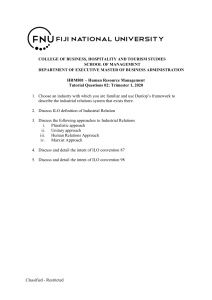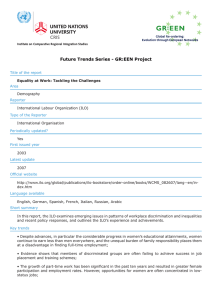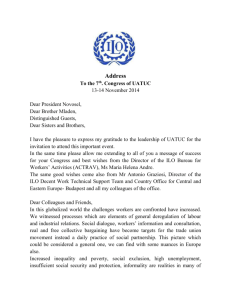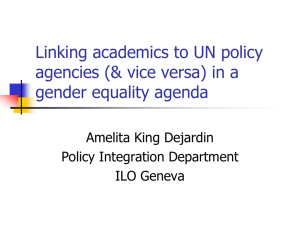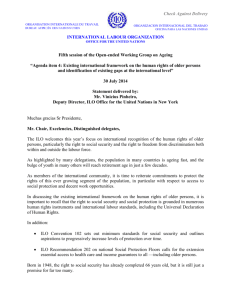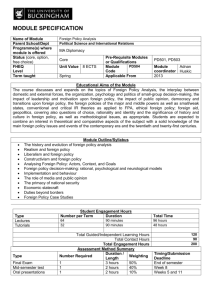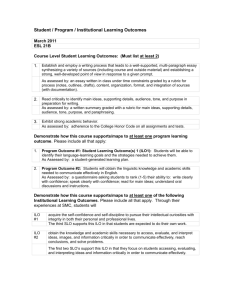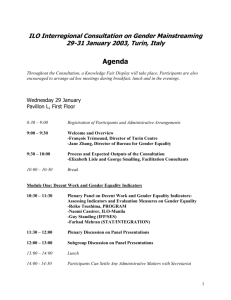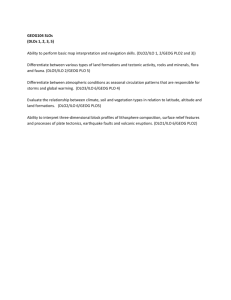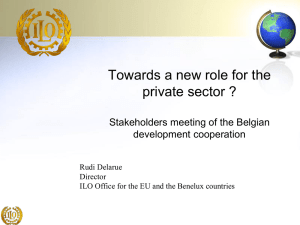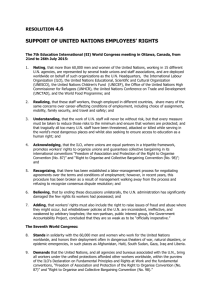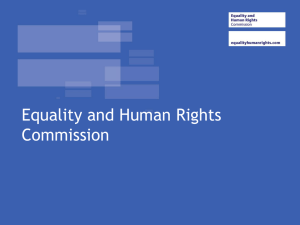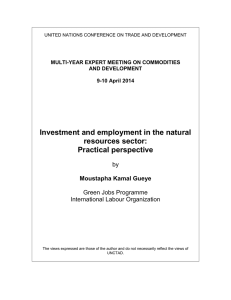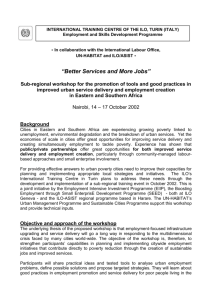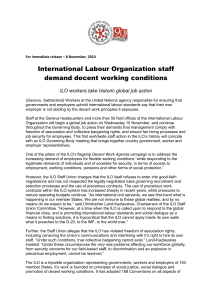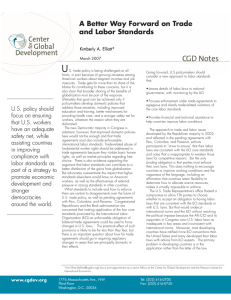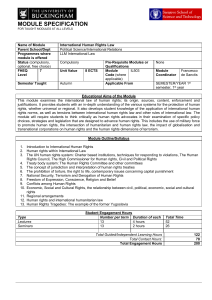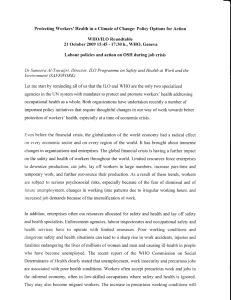Equality Meets Difference: Remuneration, Discrimination, and the
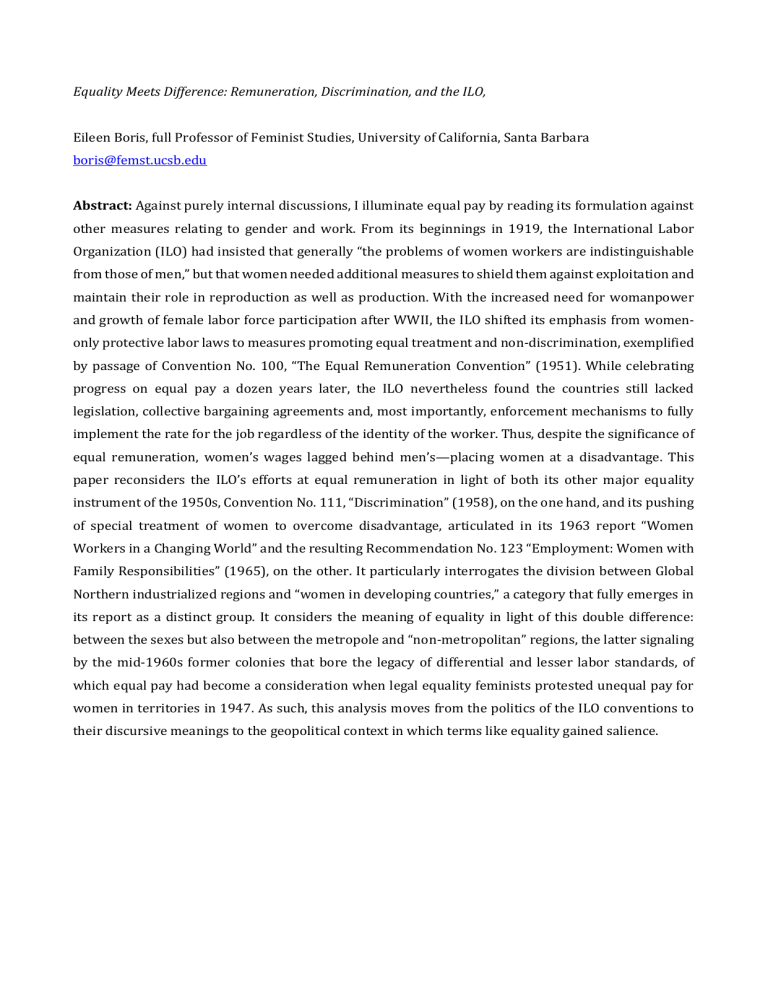
Equality Meets Difference: Remuneration, Discrimination, and the ILO,
Eileen Boris, full Professor of Feminist Studies, University of California, Santa Barbara boris@femst.ucsb.edu
Abstract: Against purely internal discussions, I illuminate equal pay by reading its formulation against other measures relating to gender and work. From its beginnings in 1919, the International Labor
Organization (ILO) had insisted that generally “the problems of women workers are indistinguishable from those of men,” but that women needed additional measures to shield them against exploitation and maintain their role in reproduction as well as production. With the increased need for womanpower and growth of female labor force participation after WWII, the ILO shifted its emphasis from womenonly protective labor laws to measures promoting equal treatment and non-discrimination, exemplified by passage of Convention No. 100, “The Equal Remuneration Convention” (1951). While celebrating progress on equal pay a dozen years later, the ILO nevertheless found the countries still lacked legislation, collective bargaining agreements and, most importantly, enforcement mechanisms to fully implement the rate for the job regardless of the identity of the worker. Thus, despite the significance of equal remuneration, women’s wages lagged behind men’s—placing women at a disadvantage. This paper reconsiders the ILO’s efforts at equal remuneration in light of both its other major equality instrument of the 1950s, Convention No. 111, “Discrimination” (1958), on the one hand, and its pushing of special treatment of women to overcome disadvantage, articulated in its 1963 report “Women
Workers in a Changing World” and the resulting Recommendation No. 123 “Employment: Women with
Family Responsibilities” (1965), on the other. It particularly interrogates the division between Global
Northern industrialized regions and “women in developing countries,” a category that fully emerges in its report as a distinct group. It considers the meaning of equality in light of this double difference: between the sexes but also between the metropole and “non-metropolitan” regions, the latter signaling by the mid-1960s former colonies that bore the legacy of differential and lesser labor standards, of which equal pay had become a consideration when legal equality feminists protested unequal pay for women in territories in 1947. As such, this analysis moves from the politics of the ILO conventions to their discursive meanings to the geopolitical context in which terms like equality gained salience.
